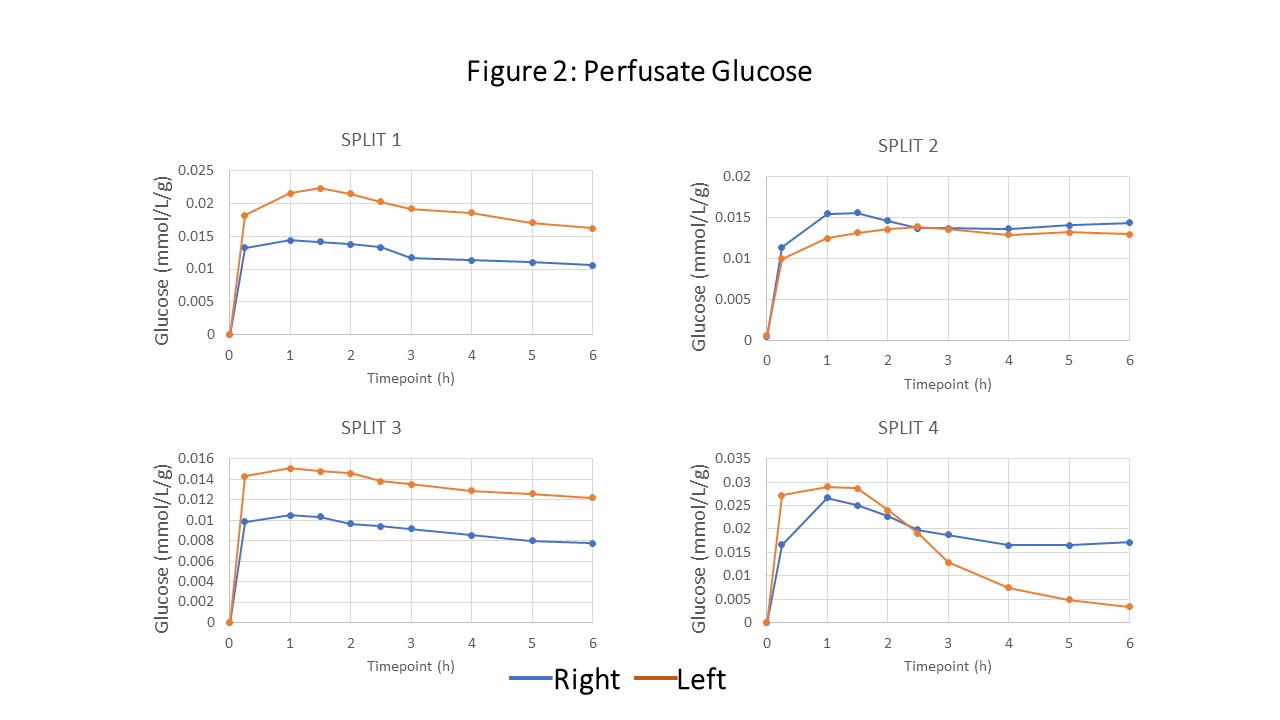Development of a Split Liver Machine Perfusion Protocol to Provide Comparative Controls in Assessing Therapeutic Interventions
J. A. Attard1, L. Wallace1, Y. Boteon1, V. Ronca1, D. Osei-Bordom1, Y. Oo1, H. Mergental2, D. Mirza2, S. Afford1
1Centre for Liver and Gastroenterology Research, University of Birmingham, Birmingham, United Kingdom, 2Liver Surgery Unit, Queen Elizabeth Hospital, Birmingham, United Kingdom
Meeting: 2020 American Transplant Congress
Abstract number: D-215
Keywords: Graft function, Liver grafts, Liver metabolism, Machine preservation
Session Information
Session Name: Poster Session D: Non-Organ Specific: Organ Preservation/Ischemia Reperfusion Injury
Session Type: Poster Session
Date: Saturday, May 30, 2020
Session Time: 3:15pm-4:00pm
 Presentation Time: 3:30pm-4:00pm
Presentation Time: 3:30pm-4:00pm
Location: Virtual
*Purpose: Ex situ donor liver machine perfusion is developing into a promising tool to test organ viability prior to transplantation and vehicle to assess novel therapeutic interventions. However, the heterogeneity in donor and graft characteristics between individual donor livers has rendered this a limiting factor in the comparison of results and outcomes with static cold storage livers as well as different modalities of machine perfusion. We hypothesised that the development of a split liver ex-situ machine perfusion protocol would provide the ideal comparative controls in the investigation of machine perfusion techniques and therapeutic interventions, thus leading to more comparable results. The primary endpoints were liver function assessment and perfusion parameter evaluation.
*Methods: Four donor livers were surgically split following identification and separation of right and left inflow and outflow vessels. Each hemi-liver simultaneously underwent normothermic machine perfusion using an artificial haemoglobin-based oxygen carrier solution for six hours. Hepatic artery and portal vein perfusion parameters were measured together with a number of metabolic parameters.
*Results: Perfusion parameters were comparable between both hemi-livers when normalised for tissue weight(Table 1). This was also observed in the trend in perfusate lactate clearance and glucose metabolism(Figures 1 and 2).
*Conclusions: In an appropriately selected population of donor livers, split liver machine perfusion is a feasible model for providing the ideal comparative controls in the investigation of therapeutic interventions.
| Right HA | Left HA | Right PV | Left PV | |
| SPLIT 1 | 0.03(0.003) | 0.06(0.012) | 1.50(0.08) | 2.48(0.15) |
| SPLIT 2 | 0.26 (0.06) | 0.18(0.07) | 0.68(0.05) | 0.84(0.13) |
| SPLIT 3 | 0.11(0.07) | 0.15(0.01) | 0.82(0.13) | 1.23(0.21) |
| SPLIT 4 | 0.33(0.05) | 0.42(0.04) | 1.67(0.59) | 1.85(0.85) |
To cite this abstract in AMA style:
Attard JA, Wallace L, Boteon Y, Ronca V, Osei-Bordom D, Oo Y, Mergental H, Mirza D, Afford S. Development of a Split Liver Machine Perfusion Protocol to Provide Comparative Controls in Assessing Therapeutic Interventions [abstract]. Am J Transplant. 2020; 20 (suppl 3). https://atcmeetingabstracts.com/abstract/development-of-a-split-liver-machine-perfusion-protocol-to-provide-comparative-controls-in-assessing-therapeutic-interventions/. Accessed December 25, 2025.« Back to 2020 American Transplant Congress


